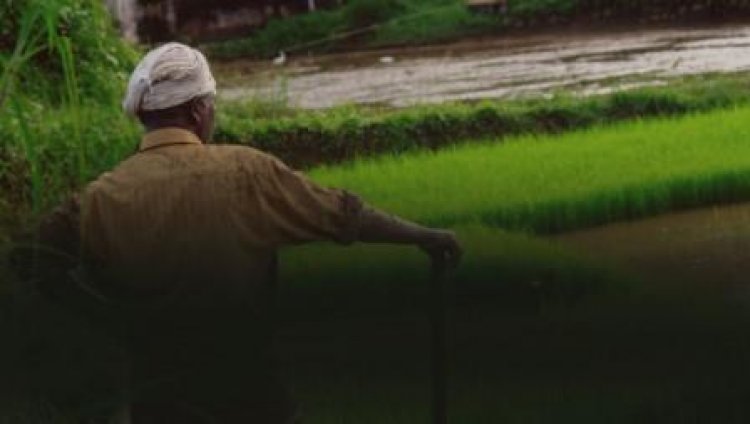The imperative to embed climate regenerative solutions to agriculture is urgent. In India, agriculture contributes to ~18% of greenhouse gas emissions. But climate and environmental factors are also the top challenge for farmers. Particularly, for 27% of the farmer population that is considered smallholder farmers. And so, the imperative is dual – the climate battle cannot be won without thinking about improvements in agricultural practices, and incomes of smallholder farmers cannot be strengthened without addressing the negative impacts of climate farmers have to contend with.
Smallholder farmers already face a host of barriers that prevent them from improving incomes – use of non-scientific practices, high input and labour costs, and a lack of good market access. Despite these looming barriers, a recently concluded research supported by The Rockefeller Foundation found that, 75% rainfed smallholder farmers cited rain as their top concern and 55% irrigated smallholder farmers cited pests or disease as their top concern. This begins to make sense when we look at the negative impact climate has had on smallholder farmers. 3 in 4 rainfed farmers and 1 in 2 irrigated farmers have lost half or more of their crop, twice on average in three years, primarily due to rain. Further, among rainfed farmers whose yield has decreased in the last 5 years, 83% cited rain as the reason while among irrigated farmers whose yield has decreased, 54% cited pests/disease as the reason and 29% cited rain.
About 75% of farmers have also witnessed an increase in pests, disease, and weeds – some of whom link the increase to an increase in variation in rain. Within this context smallholder farmers are trying to improve their income. In fact, in the last five years while yield for 1 in 2 smallholder farmers did go down, it increased or stayed the same for the other half.
76% smallholder farmers more than doubled their pesticide input in five years and 54% started using twice as much chemical fertilizers. 59% felt their soil fertility has decreased in five years but 37% felt no change; similarly 44% felt soil texture had gotten worse but 46% felt no such change.
Increased use of chemicals does lead to soil degradation, but from the perspective of many farmers, it is what helps them maintain or increase yield. Half of the farmers that witnessed an increase in yield cited usage of chemicals as the reason for it. About half or more of the farmers that noticed an increase in pests, disease, and weeds have said that the use of appropriate chemicals have helped keep the increase in check. And from a gender perspective, abut half the women on farms are spending less time today than they were five years ago – the reason for almost all women is lesser time spent on back-breaking weeding as there has been an increase in the usage of weedicide. Three in five of women that are spending less time on farming are using the available time on other income generating work such as farm labour on someone else’s farm.
Smallholder farmers are already aware of and are implementing some practices to improve soil health. For example, 61% practice crop rotation wherein the crop grown on the same parcel of land is switched-up season to season or year to year. 3 in 4 smallholder farmers are also using farmyard manure on their soil. A quarter of these farmers are buying the manure because they are unable to fulfil their requirements with the cattle they own. More farmers may need to find alternate sources over time since in five years, not only has the ownership of cattle fallen from 79% farmers to 66% but the average number of cattle owned has also fallen from an average of four to three.

Most smallholder farmers also seek out and heed to rain forecasts. 74% seek rain forecasts of whom almost all use it to plan far activities. For example, 64% use the information to decide when to sow or harvest their crop, 47% use it to decide when to spray their crop with chemicals – often delaying the spraying activity if rain is imminent. Though digital sources such as WhatsApp and weather apps have made some inroads, a large majority of 62% still rely on the news (T.V., print, or radio) for this information.
Opportunities for climate-smart agriculture may find stronger appeal if they account for the context and perspective of smallholder farmers. For example, funders should consider how a reduction in chemicals could impact the laborious work of weeding, which largely falls on women. Policy considerations that advocate for farmyard manure must consider the reducing cattle ownership and the impact this may have on farmers’ ability to imbibe their soil with natural inputs. Climate solutions cannot be embedded in silos and it is up to all the various stakeholders – government, private sector, funder, and civil society to enable a system in which adopting climate smart and regenerative practices makes good business sense for the farmer, and does not add to the already long list of risks and challenges they content with.
(Puneet Goenka and Ashish Karamchandani are part of the Transforming Agriculture for Small Farmers- TASF team at The Nudge Institute. Nudge is an action institute working towards a poverty-free India. They partner with governments, markets and civil society to build resilient livelihoods.)